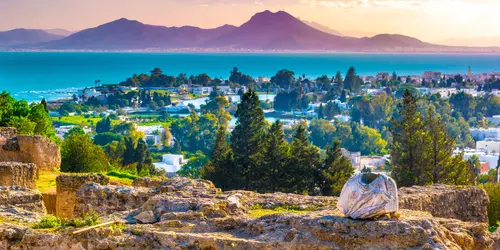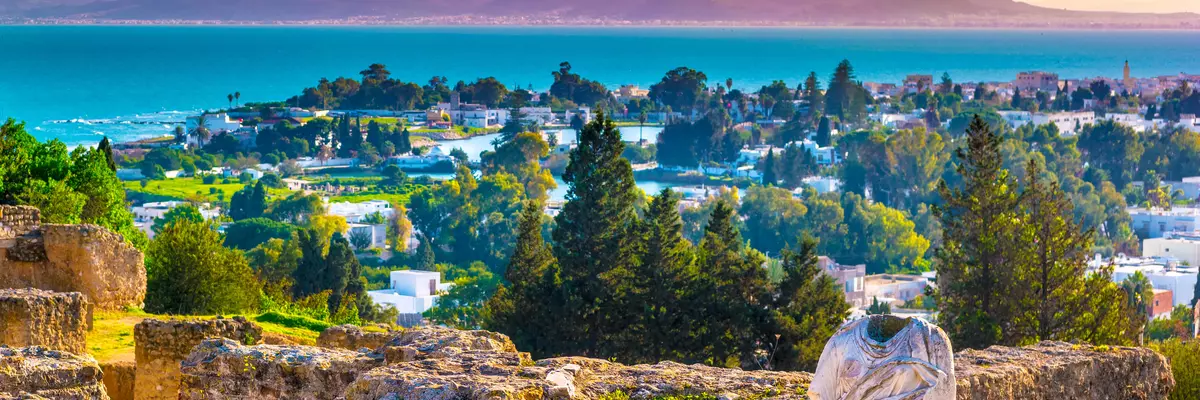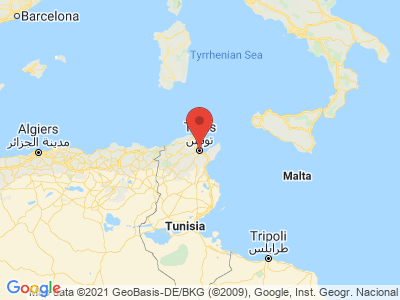Climate Table Tunis
Jan | Feb | Mar | Apr | May | Jun | Jul | Aug | Sep | Oct | Nov | Dec | |
|---|---|---|---|---|---|---|---|---|---|---|---|---|
| Max. Temperature | 14° | 16° | 18° | 21° | 25° | 29° | 32° | 33° | 30° | 25° | 20° | 16° |
| Min. Temperature | 6° | 7° | 8° | 10° | 14° | 18° | 20° | 20° | 19° | 15° | 10° | 7° |
| Sun Hours | 5 | 6 | 7 | 9 | 10 | 11 | 13 | 12 | 9 | 8 | 6 | 5 |
| Water Temperature | 15° | 14° | 14° | 15° | 17° | 20° | 23° | 25° | 24° | 22° | 19° | 16° |
| Rain Days | 10 | 8 | 9 | 5 | 3 | 1 | 1 | 2 | 3 | 6 | 5 | 10 |
The climate year of Tunis
The climate is subtropical, arid in summer and humid in winter. Due to the location of the city near the coast, major climatic extremes are absent - compared to the more southern interior, the climate of Tunis is pleasantly temperate. In general, there is little precipitation, but it is distributed over rather many rainy days - it rarely rains long and hard. Humidity is also much higher than in the rest of the country. Since Tunis is located directly at the sea - only the Lac de Tunis separates the city area from the open sea - an onshore wind can be felt almost constantly, but it rarely reaches high winds. There are no microclimates worth mentioning within the urban area.
General information about Tunis
.
Tunis is the main commercial and transportation center of Tunisia and is characterized by a mixture of historic Arab parts and the so-called New City, dating from the colonial period, which impresses with magnificent buildings. Today's Tunisia is located on the dominion of ancient Carthage - the eponymous city is today a suburb of Tunis - and so the scenery is furthermore characterized by the ruins of Roman architecture, which were built after the conquest and the Roman reconstruction from 46 BC. The old town of Tunis, the Medina, is a UNESCO World Heritage Site. In its center is the Ez- Zitouna mosque. The alleys of the medina are winding and small, the Arab market, the souks, extends in the quarter and radiates oriental flair. Here it is pleasantly shady and breezy even in high summer. The university there is the oldest in the Islamic world.
In contrast, the New Town is colonial and has a very European feel. The history of Tunis can be experienced in the Bardo Museum. Sidi Bou Said should not be missed during a visit to Tunisia. This picturesque, beautiful, ancient Arabic place was already a source of inspiration for artists and also in the winter months off-season for a visit.
Tourism Tunis
From January to May and from October to December, a mild humid climate determines the air with moderate temperatures. On the other hand, it is very hot and dry in summer from June to September. The climatic year in Tunis begins with the often foggy and rainy months of January February and March, with precipitation often taking the form of drizzle, rather it is in the air and constantly moistens its surroundings. As the summer months approach, it becomes warmer, with May and April remaining humid at first. From June until the end of August it becomes very hot, there is almost no precipitation, humidity drops and UV radiation increases dramatically. This is especially important for bathers who go to the Mediterranean Sea, which is pleasantly warm from mid-June.
Towards September the humidity increases again and it becomes cooler. October, November and December are mild and humid like the rest of the winter. Frost is an absolute rarity in Tunis.


